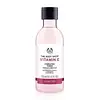What's inside
What's inside
 Key Ingredients
Key Ingredients

 Benefits
Benefits

 Concerns
Concerns

 Ingredients Side-by-side
Ingredients Side-by-side

Water
Skin ConditioningPropanediol
SolventGlycerin
HumectantTapioca Starch
Calophyllum Inophyllum Seed Oil
AntimicrobialAcrylamide/Ammonium Acrylate Copolymer
Ethylhexyl Palmitate
EmollientMelaleuca Alternifolia Leaf Oil
AntioxidantPhenoxyethanol
PreservativeSilica
AbrasiveCaprylic/Capric Triglyceride
MaskingCaprylyl Glycol
EmollientTitanium Dioxide
Cosmetic ColorantPolyisobutene
Ammonium Acryloyldimethyltaurate/Vp Copolymer
Polysorbate 20
EmulsifyingSorbitan Isostearate
EmulsifyingPolymethylsilsesquioxane
Limonene
PerfumingCitral
PerfumingT-Butyl Alcohol
PerfumingCitronellol
PerfumingLeptospermum Petersonii Oil
MaskingTocopherol
AntioxidantWater, Propanediol, Glycerin, Tapioca Starch, Calophyllum Inophyllum Seed Oil, Acrylamide/Ammonium Acrylate Copolymer, Ethylhexyl Palmitate, Melaleuca Alternifolia Leaf Oil, Phenoxyethanol, Silica, Caprylic/Capric Triglyceride, Caprylyl Glycol, Titanium Dioxide, Polyisobutene, Ammonium Acryloyldimethyltaurate/Vp Copolymer, Polysorbate 20, Sorbitan Isostearate, Polymethylsilsesquioxane, Limonene, Citral, T-Butyl Alcohol, Citronellol, Leptospermum Petersonii Oil, Tocopherol
Water
Skin ConditioningGlycerin
HumectantPPG-26-Buteth-26
Skin ConditioningPEG-40 Hydrogenated Castor Oil
EmulsifyingPhenoxyethanol
PreservativePolysorbate 20
EmulsifyingDiglycerin
HumectantTocopheryl Acetate
AntioxidantPotassium Sorbate
PreservativeCarbomer
Emulsion StabilisingXanthan Gum
EmulsifyingDisodium EDTA
Triticum Vulgare Germ Oil
EmollientParfum
MaskingBenzyl Benzoate
AntimicrobialSodium Hydroxide
BufferingCitric Acid
BufferingHydroxycitronellal
PerfumingLimonene
PerfumingGeraniol
PerfumingLinalool
PerfumingCitronellol
PerfumingCinnamyl Alcohol
PerfumingWater, Glycerin, PPG-26-Buteth-26, PEG-40 Hydrogenated Castor Oil, Phenoxyethanol, Polysorbate 20, Diglycerin, Tocopheryl Acetate, Potassium Sorbate, Carbomer, Xanthan Gum, Disodium EDTA, Triticum Vulgare Germ Oil, Parfum, Benzyl Benzoate, Sodium Hydroxide, Citric Acid, Hydroxycitronellal, Limonene, Geraniol, Linalool, Citronellol, Cinnamyl Alcohol
 Reviews
Reviews

Alternatives
Ingredients Explained
These ingredients are found in both products.
Ingredients higher up in an ingredient list are typically present in a larger amount.
Citronellol is used to add fragrance/parfum to a product. It is often derived from plants such as roses. In fact, it can be found in many essential oils including geranium, lavender, neroli, and more. The scent of Citronellol is often described as "fresh, grassy, and citrus-like".
Since the Citronellol molecule is already unstable, Citronellol becomes irritating on the skin when exposed to air.
Citronellol is a modified terpene. Terpenes are unsaturated hydrocarbons found in plants. They make up the primary part of essential oils.
Citronellol is not able to be absorbed into deeper layers of the skin. It has low permeability,
Citronellol is also a natural insect repellent.
Learn more about CitronellolGlycerin is already naturally found in your skin. It helps moisturize and protect your skin.
A study from 2016 found glycerin to be more effective as a humectant than AHAs and hyaluronic acid.
As a humectant, it helps the skin stay hydrated by pulling moisture to your skin. The low molecular weight of glycerin allows it to pull moisture into the deeper layers of your skin.
Hydrated skin improves your skin barrier; Your skin barrier helps protect against irritants and bacteria.
Glycerin has also been found to have antimicrobial and antiviral properties. Due to these properties, glycerin is often used in wound and burn treatments.
In cosmetics, glycerin is usually derived from plants such as soybean or palm. However, it can also be sourced from animals, such as tallow or animal fat.
This ingredient is organic, colorless, odorless, and non-toxic.
Glycerin is the name for this ingredient in American English. British English uses Glycerol/Glycerine.
Learn more about GlycerinLimonene is a fragrance that adds scent and taste to a formulation.
It's found in the peel oil of citrus fruits and other plants such as lavender and eucalyptus. The scent of limonene is generally described as "sweet citrus".
Limonene acts as an antioxidant, meaning it helps neutralize free radicals.
When exposed to air, oxidized limonene may sensitize the skin. Because of this, limonene is often avoided by people with sensitive skin.
The term 'fragrance' is not regulated in many countries. In many cases, it is up to the brand to define this term. For instance, many brands choose to label themselves as "fragrance-free" because they are not using synthetic fragrances. However, their products may still contain ingredients such as essential oils that are considered a fragrance.
Learn more about LimonenePhenoxyethanol is a preservative that has germicide, antimicrobial, and aromatic properties. Studies show that phenoxyethanol can prevent microbial growth. By itself, it has a scent that is similar to that of a rose.
It's often used in formulations along with Caprylyl Glycol to preserve the shelf life of products.
Polysorbate 20 is made by combining ethoxylation of sorbitan, ethylene oxide, and lauric acid. It is a mild cleansing agent, surfactant, and emulsifier.
As a surfactant, it helps collect dirt and oils for washing. Emulsifiers prevent oils and water from separating.
Polysorbate 20 also adds scent to a product. Since it is made using sorbitol, it has a sweet scent. Sorbitol can also be found in fruits such as apples and peaches.
The lauric acid used to create Polysorbate 20 is often derived from coconuts.
Polysorbate 20 may not be fungal acne safe.
Learn more about Polysorbate 20Water. It's the most common cosmetic ingredient of all. You'll usually see it at the top of ingredient lists, meaning that it makes up the largest part of the product.
So why is it so popular? Water most often acts as a solvent - this means that it helps dissolve other ingredients into the formulation.
You'll also recognize water as that liquid we all need to stay alive. If you see this, drink a glass of water. Stay hydrated!
Learn more about Water